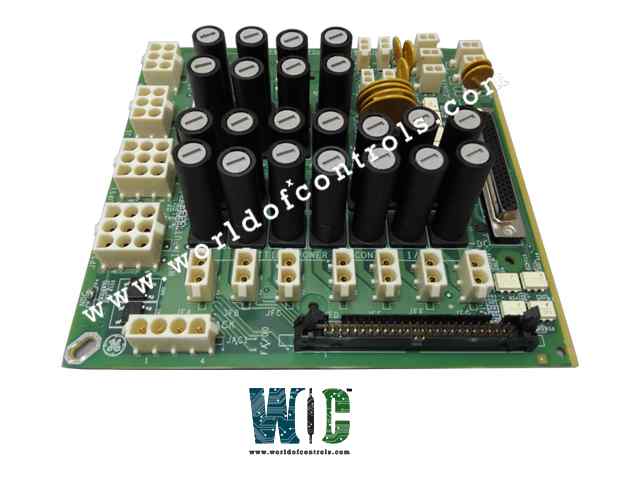
World Of Controls understands the criticality of your requirement and works towards reducing the lead time as much as possible.
IS200JPDGG1A - Power Distribution System Feedback I/O Module is available in stock which ships the same day.
IS200JPDGG1A - Power Distribution System Feedback I/O Module comes in UNUSED as well as REBUILT condition.
To avail our best deals for IS200JPDGG1A - Power Distribution System Feedback I/O Module, contact us and we will get back to you within 24 hours.
SPECIFICATIONS:
Part Number: IS200JPDGG1A
Manufacturer: General Electric
Series: Mark VIe
Product Type: Power Distribution System Feedback I/O Module
Board rating: 125 V dc
Number of Channels: 12
Thermocouple types: E, J, K, S, T
Span: -8 mV to +45 mV
Common Mode Voltage Range: ±5 V
Dimensions: 16.51 cm High x 17.8 cm
Operating temperature: 30 to 60 °C
No.of Analog Voltage Inputs: 6
Repair: 3-7 Day
Availability: In Stock
Country of Origin: United States
Manual: GEH-6721_Vol_II
FUNCTIONAL DESCRIPTION:
IS200JPDGG1A is a Power Distribution System Feedback I/O Module manufactured and designed by General Electric as part of the VIe Series used in GE Distributed Control Systems. The Power Distribution System Feedback (JPDG) I/O pack accepts inputs from up to a maximum of six power distribution boards or up to six sets of feedback signals. It conditions the board feedback signals and provides a dual redundant Ethernet interface to the controllers. The PPDA feedback is structured to be plug-and-play, using electronic IDs to determine the power distribution boards wired into it. This information is then used to populate the IONet output providing correct feedback from connected boards. The JPDG I/O pack is hosted by the JPDS, JPDM, or JPDC 28 V de control power distribution board on the Mark Vle Control Power Distribution Module (PDM). Additional boards are connected using 50-pin ribbon cable jumpers that are wired from pin 1 to pin 1. Each board contributes one feedback group to the JPDG.
INSTALLATION:
OPERATION:
WOC has the largest stock of OEM replacement parts for GE Distributed Control Systems. We can also repair your faulty boards and supply unused and rebuilt boards backed up with a warranty. Our team of experts is available round the clock to support your OEM needs. Our team of experts at WOC is happy to assist you with any of your automation requirements. For pricing and availability on parts and repairs, kindly contact our team by phone or email.
What is a Power Distribution System Feedback I/O Module?
A Power Distribution System Feedback I/O Module is a device used to monitor and manage electrical distribution systems. It processes signals from sensors and other monitoring equipment, converts these signals into digital data, and communicates this information to the central control system for real-time monitoring and control.
What types of signals can the module handle?
The module can handle a variety of signals including voltage, current, temperature, and status indicators. It processes both analog signals (such as those from voltage or current sensors) and digital signals (such as status updates from circuit breakers).
How does the module process input signals?
The module processes input signals by converting analog signals into digital form, conditioning the signals for accuracy, and then transmitting the data to the central control system. It may also include features for scaling and calibration to ensure precise measurements.